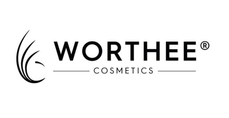Comedogenic refers to ingredients or products with high tendency to clog pores and cause blackheads; acnegenic, on the other hands, is a term used to denote ingredients or products with high possibility of causing acne and breakouts.

You have seen brands intentionally label their products as non-comedogenic or non-acnegenic. How truthful and useful are these labels or claims?
You have also probably browsed some cosmetics analysis websites with comedogenic ratings on ingredients. Are there really ingredients that are more likely to give you blackheads and acne than the others? Will you be completely worry-free from blackheads and acne when you avoid products with these so-called “acnegenic” and “comedogenic” ingredients?
Before anything else, you have to understand, how these people decide which products or ingredients are acnegenic or comedogenic, and which aren’t.
How Cosmetics Brands Decide to Label a Product Non-Comedogenic or Non-Acnegenic?
Over the years, we have seen too many products loaded with irritating ingredients with non-comedogenic or non-acnegenic terms printed on their packaging. The truth is, too many cosmetics companies make too many too-good-to-be-true claims just to get your attention. So they have lots of flowery terms like hypoallergenic, cosmeceutical, dermatologist-tested, dermatologist-approved and the list goes on.
Why does a brand choose to label a product non-comedogenic or non-acnegenic?
Disgustingly yet truly, these marketing words dramatically stimulate sales. Consumers buy products that say they aren’t causing blackheads and acne.
Then, must a product be free from irritating ingredients in order to be labelled non-comedogenic or non-acnegenic?
Frustratingly, NO. There are no supervised or regulatory standards for these terms, not anywhere in the world. No one will fine and penalize these brands, if you buy and use their product with non-acnegenic label, yet you have breakouts thereafter. Even the greasiest, oiliest cream can say it won’t give you breakouts.
If you think further, the opposite logic is true as well. A product not labelled “non-comedogenic” or “non-acnegenic” will not certainly give you blackheads and breakouts. Lots of brilliantly-formulated products help reduce acne and blackheads, even though they do not come with non-comedogenic or non-acnegenic labels.
Thus, these claims are misleading and useless. The act of purchasing only products with “non-acnegenic” or “non-comedogenic” claims is meaningless too, and this will in turn instigate more brands put on these claims to delude consumers.
What about Research-Claimed Comedogenic or Acnegenic Ingredient?
Some ingredients are said to have the potential of causing blackheads and acne, via the direct animal-testing.
These scientists will take some rabbits, slather on a certain ingredient on the rabbit ears for weeks and then observe the histology of their hair follicles. If the hair follicles appear to have microscopic structure of tissue changes similar to those in acne, this ingredient will be considered as acnegenic.
Much as we hope and pray animals aren’t suffering for ingredients we put on our skin, but testing cosmetics on animals is happening. Few companies with conscience like Paula’s Choice, never tested on animals at any stage of product development and never will, support charities focused on animal welfare such as the Humane Society, ASPCA and NAVS and never contracts with any third parties to conduct animal testing on their behalf.

Because the rabbit ears aren’t your human ears. What causes acne on the rabbit ears might be so safe for your face skin. The opposite is true. The ingredient that doesn’t give the rabbit ears breakouts might give you breakouts anyhow.
Plus, in the experiments, they are testing just one ingredient, in 100% concentration. But in reality, you use products with multiple combinations of ingredients in much lesser concentration.
Thus, relying on the analysis if certain ingredient is acnegenic or comedogenic, is again meaningless.
But, what can you trust? Your own skin.
Stimulants for Blackheads and Breakouts
Too many factors could lead to the outburst of blackheads and acne.
Combination of ingredients, concentrations, textures, pH level, your inherent skin type, the way you apply a product, the time you let a product sits on your skin … You have no reason to believe if a product will cause blackheads and breakouts by just looking at the marketing claims on the product packaging.
For instance, industrial grade petrolatum jelly and medical grade petrolatum jelly have a vast difference in their level of comedogenic. Whether you apply a thin layer, or a thick layer, will have different impacts on your skin too.

Reasons to blackheads and breakouts are often complicated. Without trials and errors, you can’t always conclude a direct relationship between a product or ingredient and its tendency to cause blackheads and breakouts. You can’t avoid, but to experiment yourself and let your skin tell if a product seems to be acnegenic and comedogenic especially for you.
Some general rules to drastically increase your chances of getting non-acnegenic or non-comedogenic products
- Directly ignore the “non-acnegenic” or “non-comedogenic” labels on the packaging
- Look straight into the list of ingredients. Make sure the products you use contain only skin-loving ingredients that do no harm, without any irritant (fragrance, high concentration of alcohol, menthol, peppermint etc)
- Choose a lightweight product if you have oily skin
- Not to have many layers of thick products even though you have dry skin
Screen your interested products with these four essential tips. For the “finalists”, purchase the samples first (not the full size), enough for you to use for two weeks. Put on the product on small areas of your cheeks. Observe for 14 days. If no blackhead and acne appears, then you can label it “non-comedogenic” and “non-acnegenic” for yourself.



